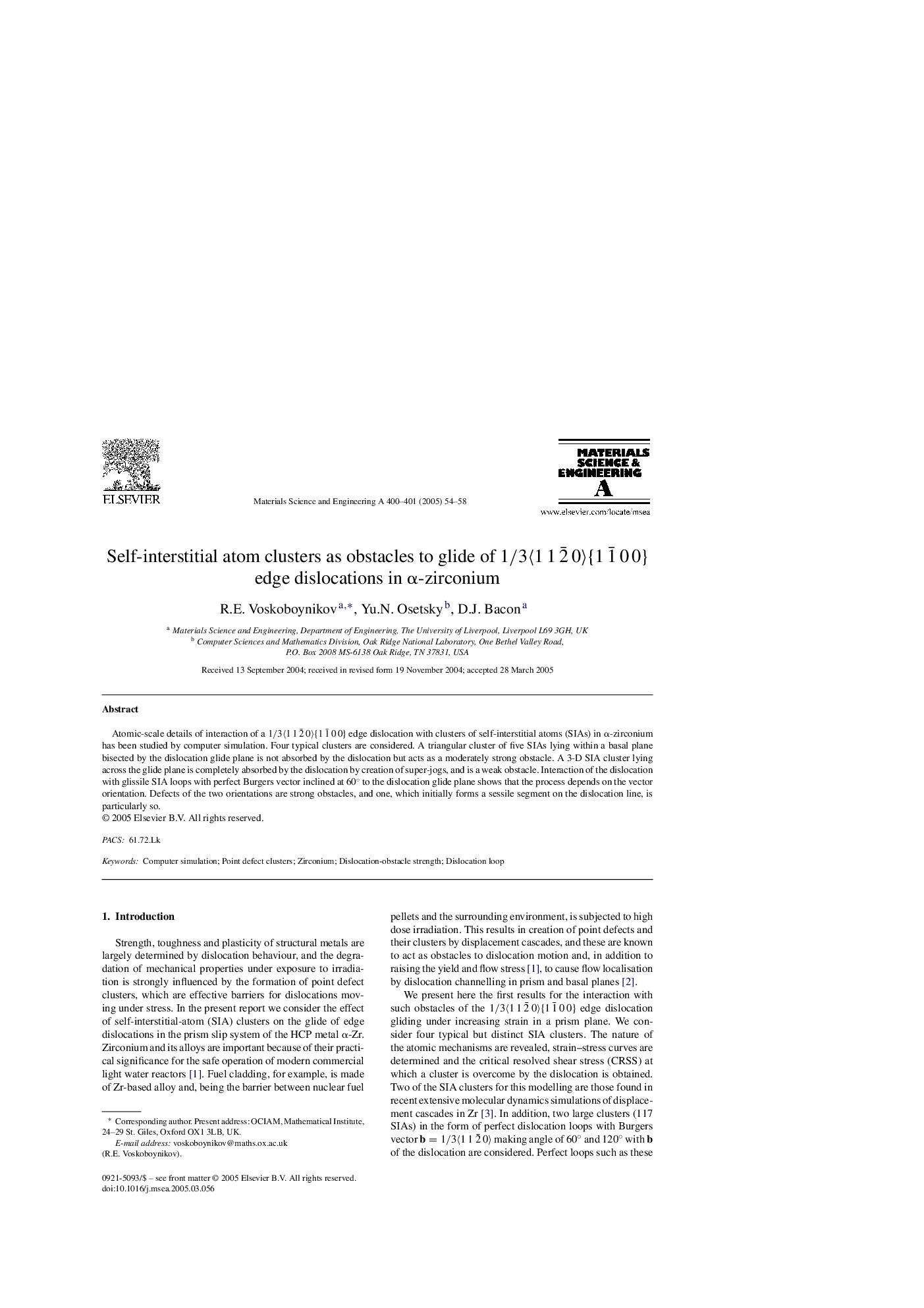| Article ID | Journal | Published Year | Pages | File Type |
|---|---|---|---|---|
| 9796076 | Materials Science and Engineering: A | 2005 | 5 Pages |
Abstract
Atomic-scale details of interaction of a 1/3ã112¯0ã{11¯00} edge dislocation with clusters of self-interstitial atoms (SIAs) in α-zirconium has been studied by computer simulation. Four typical clusters are considered. A triangular cluster of five SIAs lying within a basal plane bisected by the dislocation glide plane is not absorbed by the dislocation but acts as a moderately strong obstacle. A 3-D SIA cluster lying across the glide plane is completely absorbed by the dislocation by creation of super-jogs, and is a weak obstacle. Interaction of the dislocation with glissile SIA loops with perfect Burgers vector inclined at 60° to the dislocation glide plane shows that the process depends on the vector orientation. Defects of the two orientations are strong obstacles, and one, which initially forms a sessile segment on the dislocation line, is particularly so.
Related Topics
Physical Sciences and Engineering
Materials Science
Materials Science (General)
Authors
R.E. Voskoboynikov, Yu.N. Osetsky, D.J. Bacon,
